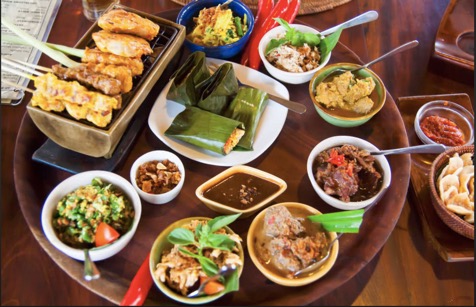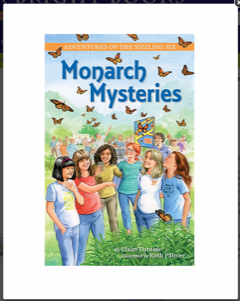YA Eco Mysteries, Memoirs, Novels & Travel
The Last Whaling Station
The Last Whaling Station Point San Pueblo California
A Visit to the Setting of the Story
Reality met the setting I imagined on my trip to the Last Whaling in the US, San Pueblo Point, East Bay California. This is an excerpt from The Gray Whale's Lament after my trip.
Chapter 8. The Last Whaling Station
They drove on the freeway through heavy traffic and then across the long, roller coaster-like San Rafael Bridge. Nearing their destination at Point Molate Naval Base, they passed an old air raid shelter with castle-like brown brick walls covered in vines.
Searching the internet Sarah exclaimed, “Mom, this is so interesting . . . did you know that Native Americans fished right here for centuries, and that in the late 1800s it was a Chinese shrimp camp?”
“I knew about the shrimp camp and of course there were native Americans living here long before us. Their ancestors still live around this place. If we dig in the earth we might find shards of their pottery, the shells of the mussels, and the bones fish they ate.”
“Ooh, that gives me goose bumps.” Sarah shivered.
At Point San Pablo, the road had been blocked by security guards, so they turned right at a fork, winding around a hill. Noticing that her mother was clutching the steering wheel so tightly her knuckles were white, Sarah asked, “Mom, what’s wrong?”
“This is where your Grandmother Rose took the picture of the whaling station,” she replied.
“Stop, Mom! I want to take a picture at this spot,” Sarah said.
Bumping off the road, they parked on a grassy shoulder. Then the two hiked to the top of the hill.
“Is that where the whales were killed?” Sarah asked, pointing across the bay.
“Yes.” Her mother sighed. Standing shoulder to shoulder they listened to the wind rustling through the golden, dry grass at their feet. The wind picked up, flattening the grass, and howling across the waves.
Sarah shivered. “It sounds like the ghosts of long ago still haunt this place.”
Her mother squeezed her hand. “It’s okay to remember the past,” she said, dabbing away tears. “Even upsetting memories can motivate you to do something worthwhile.”
Sarah began snapping pictures. “Still, it’s peaceful here. It’s hard to believe this bay was home to the last active whaling station where whales were slaughtered in the US.”
***
Ramp for Dragging whales into the Whaling Station
Finally, they pulled into the parking lot, hidden around a bend at the end of the road, at Point San Pablo Yacht Harbor.
With the Chummy at her heels and binoculars in hand, Sarah tumbled out of the car. Pulling out her mobile phone, she snapped photos of houseboats, and floating homes that lined the bay.
Houseboats San Pueblo Point, East Bay California
She couldn’t resist taking a picture of the funky, oversized sculpture of an alligator with jaws wide open.
Oversized Sculpture of an Alligator, San Pueblo Hatch Club
Even the historic old shacks and rusting machinery made interesting pictures. As they walked by, the harbor master waved and called out, “Don’t forget to visit the farm with goats and order something to eat at the restaurant.”
They came to the pebbly beach where a sign that read: OK for launching kayaks, canoes, etc. Chummy trotted along the beach stopping to sniff at invisible scents. Her mother rubbed her forehead, “It’s changed since I was here years ago.”
“I can’t see the old whaling station,” Sarah said, looking through her binoculars.
“We need to drive to the North side of the point where we can see across the bay to the remains of the whaling station.”
They got back in the car and within minutes they arrived at the point. Chummy leapt out of the car and began to bark, “Be quiet!” Sarah command her dog to stop him from barking at the elephant seals rumbling contentedly while sunning themselves on the rocks. She could make see the blackened wooden posts, which had supported the pier and the gangplank up to the factory. Her mother had been right, there was nothing to tell of the horror that had happened here. No witness to how ruthlessly the whales had been slaughtered.
Chocking back curse words she hissed, “Nasty, stupid—.”
Just then Chummy began yipping. She turned and saw her dog digging furiously at something half-buried in the sand.
“Chummy, come here,” Sarah called. The dog raced toward her, then turned back to continue digging, sending sand flying.
“What have you got there, boy?” Sarah strode over to Chummy. It appeared to be blue plastic bottle cap sticking out of the sand. Getting down on her knees, she rocked the bottle loose. She brushed off the sand she held it up to the light. It was an ordinary plastic water bottle with a roll of paper inside. There was also a plastic bag with something tiny curled inside. Peering more closely she could make out what appeared to be tiny black eye in a white face and a curled body. The image of the fetus in her dream flared in her mind. She dropped the bottle as if it were a scorpion readying to sting her.
“Calm down. It’s just a bottle with a plastic bag and some junk inside it. Nothing to be afraid of.”
“What is it?” Sarah asked, her breath catching in her throat.
“I can’t tell for sure,” her mother said. “Maybe it’s a message or treasure from a castaway pirate stranded on a deserted tropical island,” her mother joked.
“Right, and we should row over to save him right now,” Sarah said, brushing off the sand clinging to Chummy.
Global Travel Environmental Books
Teiglach made from crunchy dough: A Memoir Behind the Walled Garden of Apartheid
In my memoir, Behind the Walled Garden of Apartheid I describe memories triggered by my mother’s cooking, including her wonderful aromatic chicken soup, gefilte fish, a savory fish mouse, and the sweet teiglach made from crunchy dough boiled in honey and ginger, to name just a few.
In The Case of the Missing Piping Plovers set in the Bahamas, I describe the delectable traditional fresh Conch salad, Johnnycakes, and Guava Duff—a Bahamian dessert akin to a jelly roll.
Bahamian Guava Duff, The Adventures of the Sizzling Six: The Case of the Missing Pipping Plovers
In Vanishing Birds, slated for publication in fall of 2021, I expand my narrative to the entire length of the Atlantic migratory flyway from Baffin Bay in the Arctic to Tierra Del Fuego, a remote island on the southernmost point of Chile. I can still taste the Chilean sea bass and empanadas we dined on in a restaurant overlooking the bay in Valparaiso, Chile.
Monarch Mysteries, follows the migration routes of the threatened Monarch butterflies from North America to the Oyamel forest at El Rosario sanctuary in Mexico. In this tale I describe the Day of the Dead Bread, or Pan de Muerto, a big round soft bread decorated with strips of dough to resemble bones, and also spicy tamales.
Recently, I completed Red Flag Warning: An Eco Adventure, sparked (pun intended) by the devastating wildfires now exploding around the globe. The story is told through the eyes of three diverse teenagers: Aisyah from Sumatra, Kirri from Western from Australia, and Hector from Northern California, brought together by a powerful gift—the ability to communicate with animals. In this Eco adventure the reader is treated to a Rijsttafel feast including Lucky New Year Salad, which I actually enjoyed in Singapore during the Chinese New Year.

Rijsttafel Indonesia, Red Flag Warning: An Eco Adventure
I would be remiss in not mentioning that I have favorite Southern recipes, too. I hope those recipes I serve at family dinners and special occasions will entwine themselves in my children’s and grandchildren’s memories—to be shared with the next generation.
Other favorite gustatory moments, which haven’t yet made it into my stories, include the manicotti filled with ricotta cheese we tasted at a small restaurant atop Mt. Etna, on the island of Sicily. And then there’s Israeli chopped salad we ate at Latrun in Israel . . . I could go on and on.
To celebrate good times and good memories I would love you to share your favorite memories of food. Just send them to cldatnow@me.com. And if you are interested in ordering a copy of any of my books you can find them on Amazon. For more Information Please visit related blogs at:
Mysteries of the Monarch Butterflies Migration Blog
How Migratory Species Connect the Planet
Multicultural, Diverse, and Global Environmental Literature
The Winds of Climate Change calling Authors of Children's Literature
The Winds of Change Blog blog SCWBI Spring Bulletin
Interview with Author Claire Datnow Dragon Fly Eco Lit.



